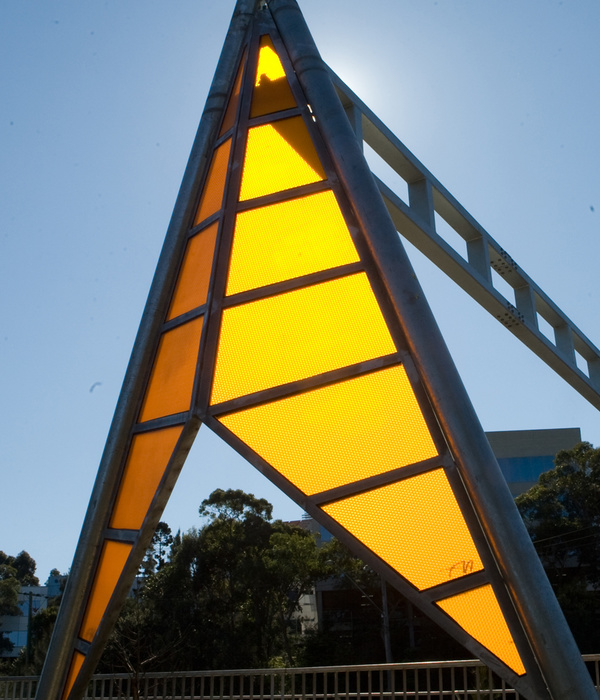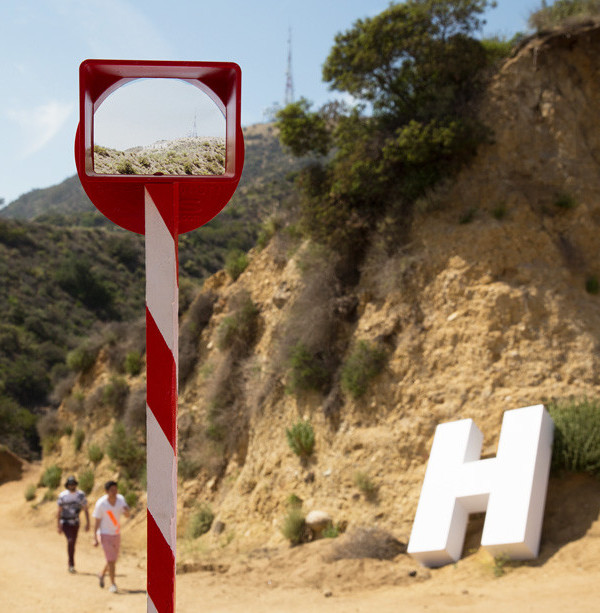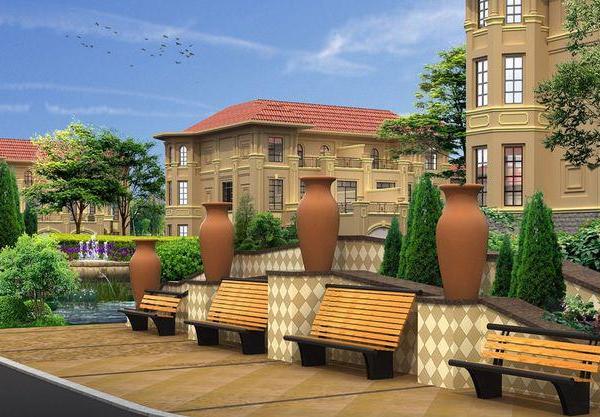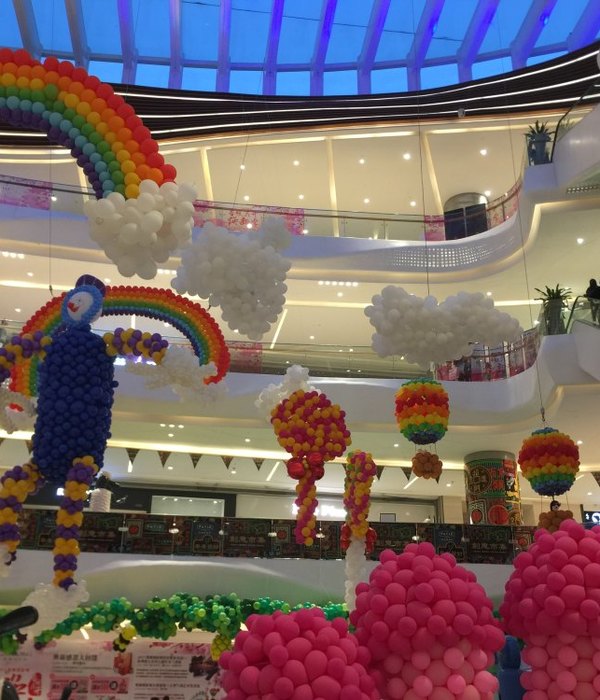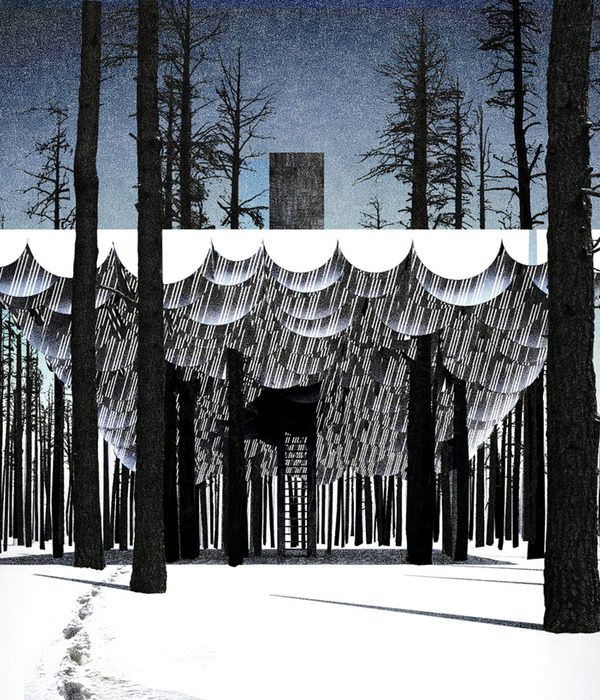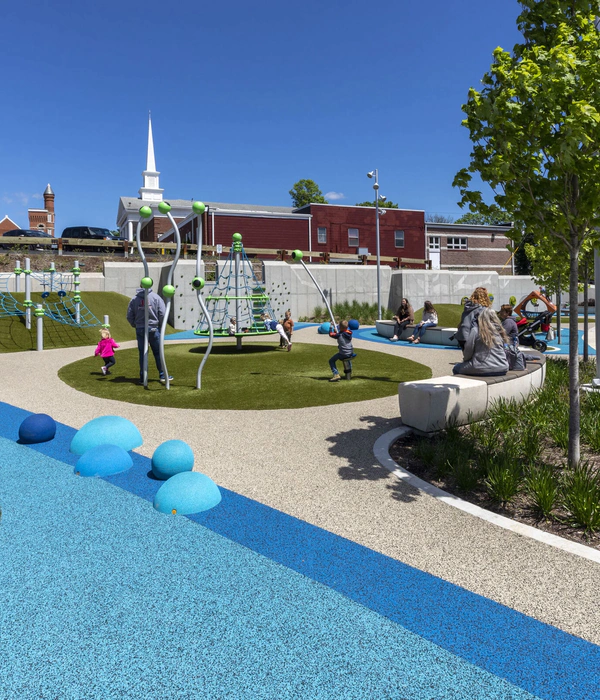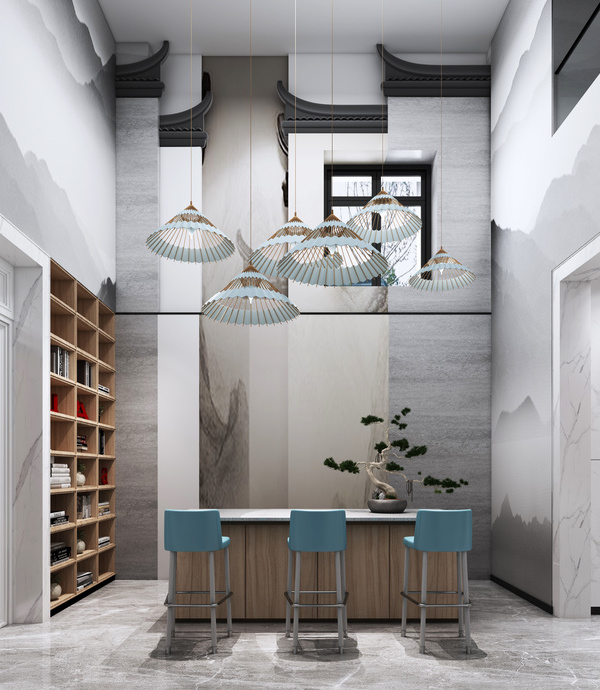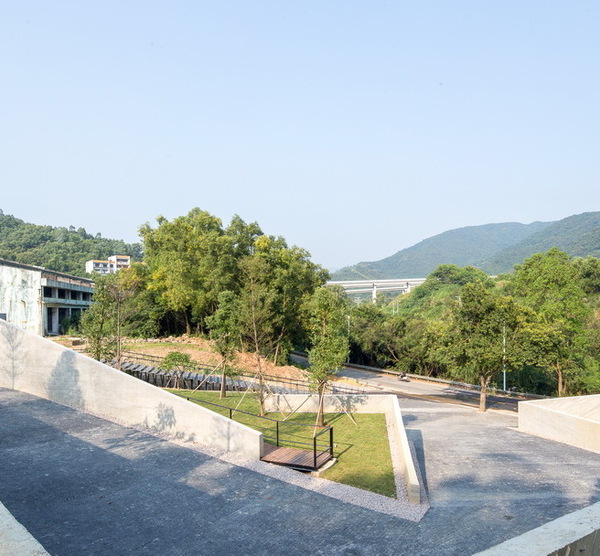当艺术思维遇上景观建筑,一个独一无二的项目就由此诞生了。本项目的初衷旨在为由Ostrava市资助的当代视觉艺术平台PLATO寻找一个举办临时艺术活动的基地,在寻找的过程中,废弃的Hobby市场大厅进入了设计师们的眼帘。该大厅面积为5000平方米,广阔的空间具有巨大的潜力,室内区域可以作为画廊与活动空间,而室外的墙体与半封闭空间则可以变身为一个典型的花园舞台区,为各种不同类型的艺术活动提供场地。在本项目之前,PLATO一直在寻找激活这个空间的方法。
When an artistic vision meets landscape architecture, a project of a unique kind evolves. In the search for a temporary art base for PLATO, a contemporary visual arts platform funded by the city of Ostrava, abandoned Hobby market with 5.000 sqm hall was occupied. The wide space had great potential, while the indoor area could perform as a gallery and events space, the walled and semi-roofed outdoor space, would become an atypical garden/stage for all different sorts of gallery’s activities. PLATO was searching for the idea how to make it work.
▼项目概览,overall of the project © PLATO
在与艺术家Matyáš Chochola的合作下,景观设计事务所Atelier Partero为该场地设想了一个世界末日的场景,从概念上来说,这个场景构想出人类不可避免的黑暗命运,以及对自然的再生力量持有的乐观态度。自然在文明的废墟上舞蹈,末日的到来加速了自然的力量,帮助她夺回被人类侵占的土地。植物在即将倒塌的建筑物上生长,在满是伤痕与废墟的土地上,撒下生命的种子。
In collaboration with artist Matyáš Chochola, an apocalyptic scene was imagined that would conceptually reflect the dark and inevitable doom of mankind with a optimism of nature’s regenerative power. A Dance on the ruins of civilization. The idea was to accelerate the power of nature and help her to take the place back. To scar and destroy and then sow vegetation and nurture seeds of life onto the ground of a perishing building.
▼项目场地包括废弃的Hobby市场大厅以及其室外空间,The site includes the disused Hobby Market hall and its outdoor space © PLATO
▼建筑物的废墟与野蛮生长的植被描绘出一幅末世景象,The ruins of buildings and the wild growth of vegetation paint an apocalyptic scene © PLATO
虽然有着各种限制,但这些限制却使本项目变得更加独特而有趣。最初,设计师想用开凿钻孔的方式在大厅的混凝土地面上塑造出起伏的地形,但是这种方式被认为太具侵略性,因此,改为用碎石堆砌。精心绘制的平面图量化出大约需要的碎石体积以及植被/树木的总量,而剩余的细部设计则需要在现场完成。
We knew this was no ordinary project but with every limitation it became even more interesting. At first we want to drill and lift out the concrete, decision was deemed too invasive so we decided to bring in a setting of rubble. A site plan was drawn to estimate the volume of debris and number of plants/trees needed. The rest of the design has to be in-situ.
▼室内空间概览,overall of the interior © PLATO
▼室内外空间的交融,The blending of indoor and outdoor space © PLATO
▼精心绘制的平面图量化出大约需要的碎石体积,A site plan was drawn to estimate the volume of debris © PLATO
值得一提的是,项目所采用的树苗是从附近的托儿所回收而来的,在这之前,它们既不受到欢迎也没有任何售卖价值。而这些废弃的树苗恰恰迎合了本项目中提出的“世界末日”的空间概念。
The trees themselves need a special mention in this story. Regarded as undesirable and crooked they were saved from a small nursey that couldn‘t sell them. These abandoned and outcast trees were the perfect match for this conceptual space.
▼废弃的树苗恰恰迎合了本项目中提出的“世界末日”的空间概念,These abandoned and outcast trees were the perfect match for this conceptual space © PLATO
时钟在滴答作响,一切都在飞速发展,极短的工期是本项目最艰巨的挑战。项目中所采用的碎石必须尽快从附近的建筑工地移走。这意味着设计团队仅有两天时间来完成整个项目,其中一天需要用有限的机械设备来组织与设计空间,另一天则用作布置植物与艺术品。团队中的每一个人都倾尽全力。
Time was a ticking challenge, everything was moving fast. Rubble had to be urgently moved from nearby construction site. That meant we would have only one day to use the available machines to organize and design the space and another day to plant the vegetation and art pieces. We needed every woman and man.
▼设计团队布置场地的场景,The design team is laying out the scene of the site © PLATO
对设计团队来说,这是一次激动人心的团建经历。Atelier Partero事务所、艺术家以及建筑工人共同上演了一场精彩的即兴创作,为这里塑造出令人印象深刻的空间印象,为参观者讲述了一个生动的“末日”故事。最后,Matyáš Chochola和他的团队以行为艺术的形式宣告了该作品的落成与“未来花园”的开放,在这场艺术表演中,表演者生动地描绘了一种黑暗中的狂喜,一种在文明废墟上近乎仪式一般的舞蹈。
Little did we know this was going to be one of the most thrilling team-building experience for us. The improvisation and creative collaboration of both our studio, artists and construction workers carved an unforgettable impression and story for the birth of this space. The conclusion of the work and hence opening of the garden was declared with an artistic performance by Matyáš Chochola and his team, depicting wild expressions of dark joy, a sort of dancing ritual on the ruins of an extinct civilization.
▼Matyáš Chochola团队的行为艺术表演,Performance art by Matya š Chochola’s team © PLATO
▼表演者生动地描绘了一种黑暗中的狂喜,一种在文明废墟上近乎仪式一般的舞蹈,depicting wild expressions of dark joy, a sort of dancing ritual on the ruins of an extinct civilization © PLATO
▼表演中的艺术家,Artist in performance © PLATO
▼为演出配乐的吉他手,The guitarist © PLATO
虽然在设计概念上,本项目传达出一种近乎残酷的悲观主义,但是从实际功能上讲,“未来花园”则是一个鼓舞人心的公共空间。它拥有一个充满活力的公共空间所需要的一切:咖啡馆、带有遮阳顶棚的半室外空间、大面积的开窗,这些设计元素为人们创造出没有年龄限制的、安全且活波的大型活动场所。这里既是一个多功能的活动场所,以灵活的方式适应不同的季节;这里也是一个充满未知的场所,吸引着好奇的人们近距离探索空间中的每一处细节与碎片,吸引着活泼的孩子们来此嬉戏玩耍。
Beyond the conceptual pessimism, this garden behaves as a truely functional and inspirational public space. It has everything a vibrant place needs: a cafe, semi-shade, walls with large windows creating a safe lively space for all age groups. It‘s a flexible site that works in different seasons and for multi-purposes. It is a site that leaves people questioning. It draws the curious ones in to explore the details and pieces up close and attracts the active ones go run around for a hide/seek game.
▼没有年龄限制的、安全且活波的大型活动场所,a safe lively space for all age groups © PLATO
▼在花园中尽情释放天性的孩子们,Children performing and playing in the garden © PLATO
在开放的空间中植被自由地生长,它们所营造出的氛围比设计团队想象的还要好得多。当人们在废墟中漫步时,生长的植物带给人们心灵的震撼,让人们深切地体会到自然变化是多么的迅速和强大。
Since the opening plants took off much better then we imagined. It gives shivers, walking around the rubble and see how fast and powerful the natural change is.
▼“未来花园”作为公共空间将人们汇聚在一起,The Garden of the Future serves as a public space to bring people together © PLATO
▼平面图,plan © Atelier Partero
{{item.text_origin}}


